An interactive Javascript Plotting Boilerplate
For plotting visual 2D data with Javascript and canvas (in 2d-context).
This is a simple collection of useful functions I repetively used for visualizing 2D stuff on HTML canvas. Basic features are
- adding elements like vertices, lines, vectors, polygons, ellipses, images
- cofiguration of the canvas behavior (fullsize, interaction, raster)
- mouse interaction (zoom, pan, drag elements)
- keyboard interaction
- touch interaction for dragging vertices (desktop and mobile)
Install the package via npm
$ npm i -g npm
$ npm i plotboilerplate
The HTML file
For a full example see main-dist.html:
<canvas id="my-canvas">
Your browser does not support the canvas tag.
</canvas>
<!-- Optional: a helper to display mouse/touch position -->
<div class="info monospace">
[<span id="cx">-</span>,<span id="cy">-</span>]
</div>
The ‘info’ block is just for displaying the current mouse/touch coordinates.
The javascript
var pb = new PlotBoilerplate( {
canvas : document.getElementById('my-canvas'),
fullSize : true
} );
Add elements to your canvas
// Create two points:
// The origin is at the visual center by default.
var pointA = new Vertex( -100, -100 );
var pointB = new Vertex( 100, 100 );
pb.add( new Line(pointA,pointB) );
// When point A is moved by the user
// then move point B in the opposite direction
pointA.listeners.addDragListener( function(e) {
pointB.sub( e.params.dragAmount );
pb.redraw();
} );
// and when point B is moved
// then move point A
pointB.listeners.addDragListener( function(e) {
pointA.sub( e.params.dragAmount );
pb.redraw();
} );
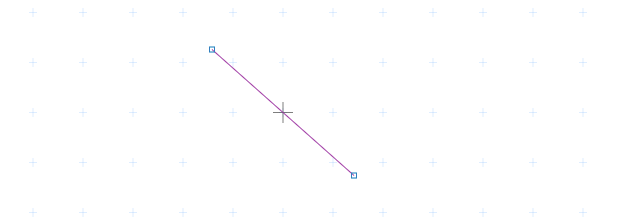
Examples and screenshots
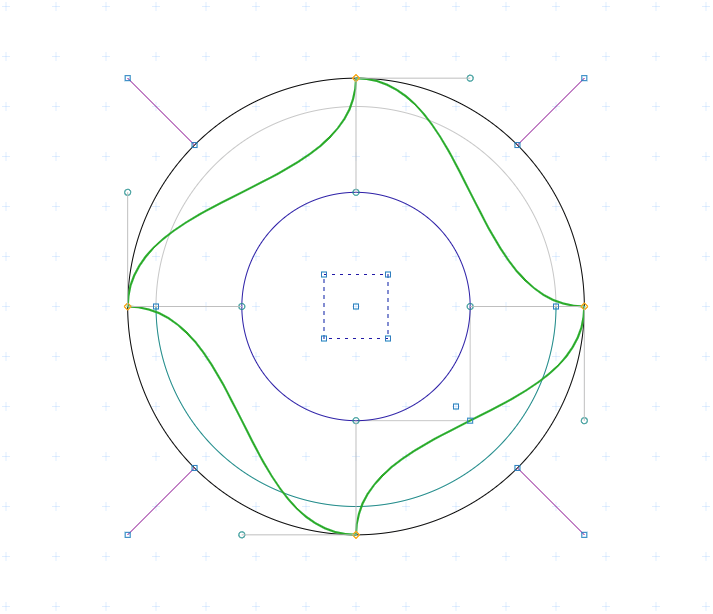
Feigenbaum bifurcation (logistic map)
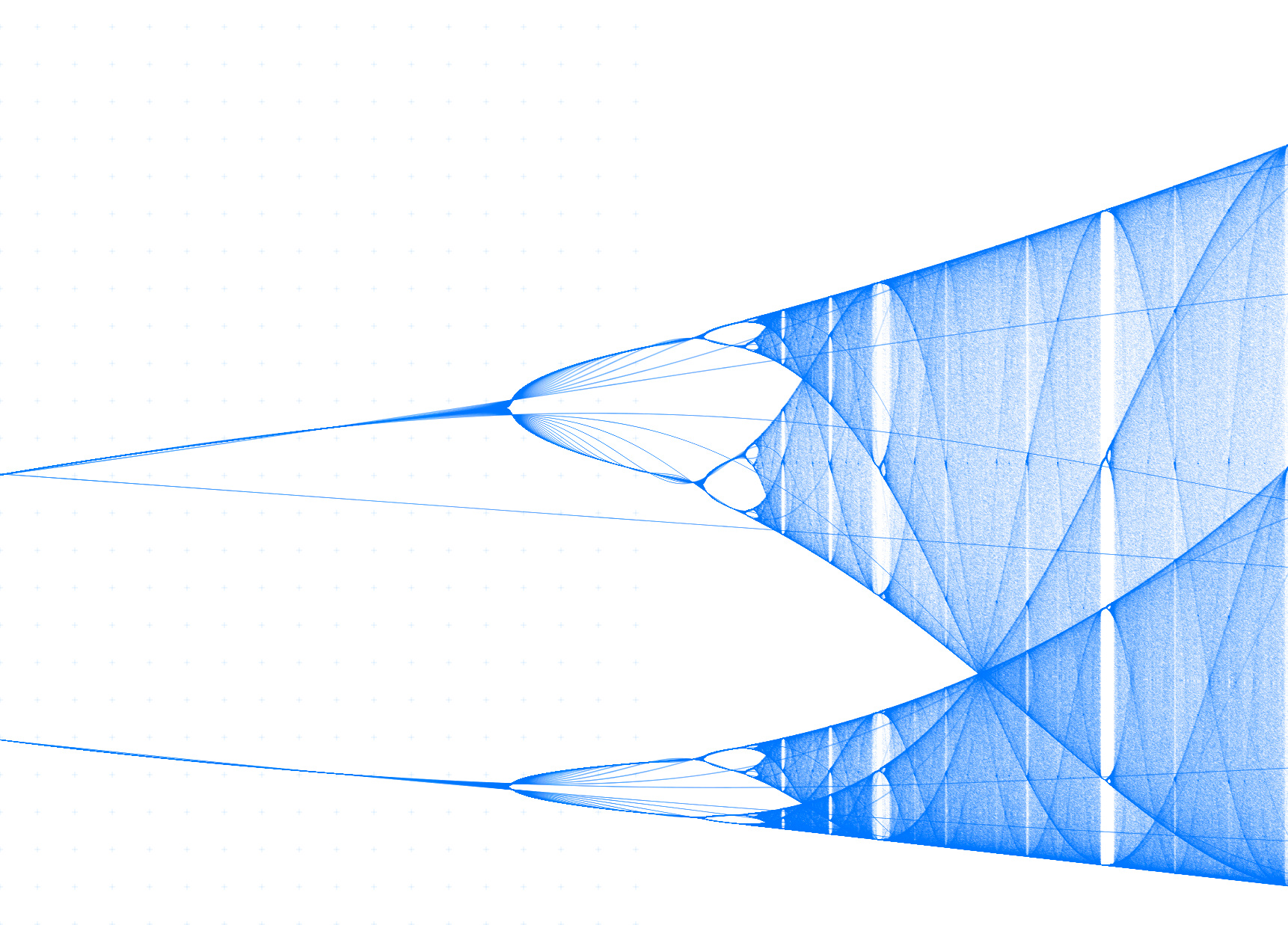
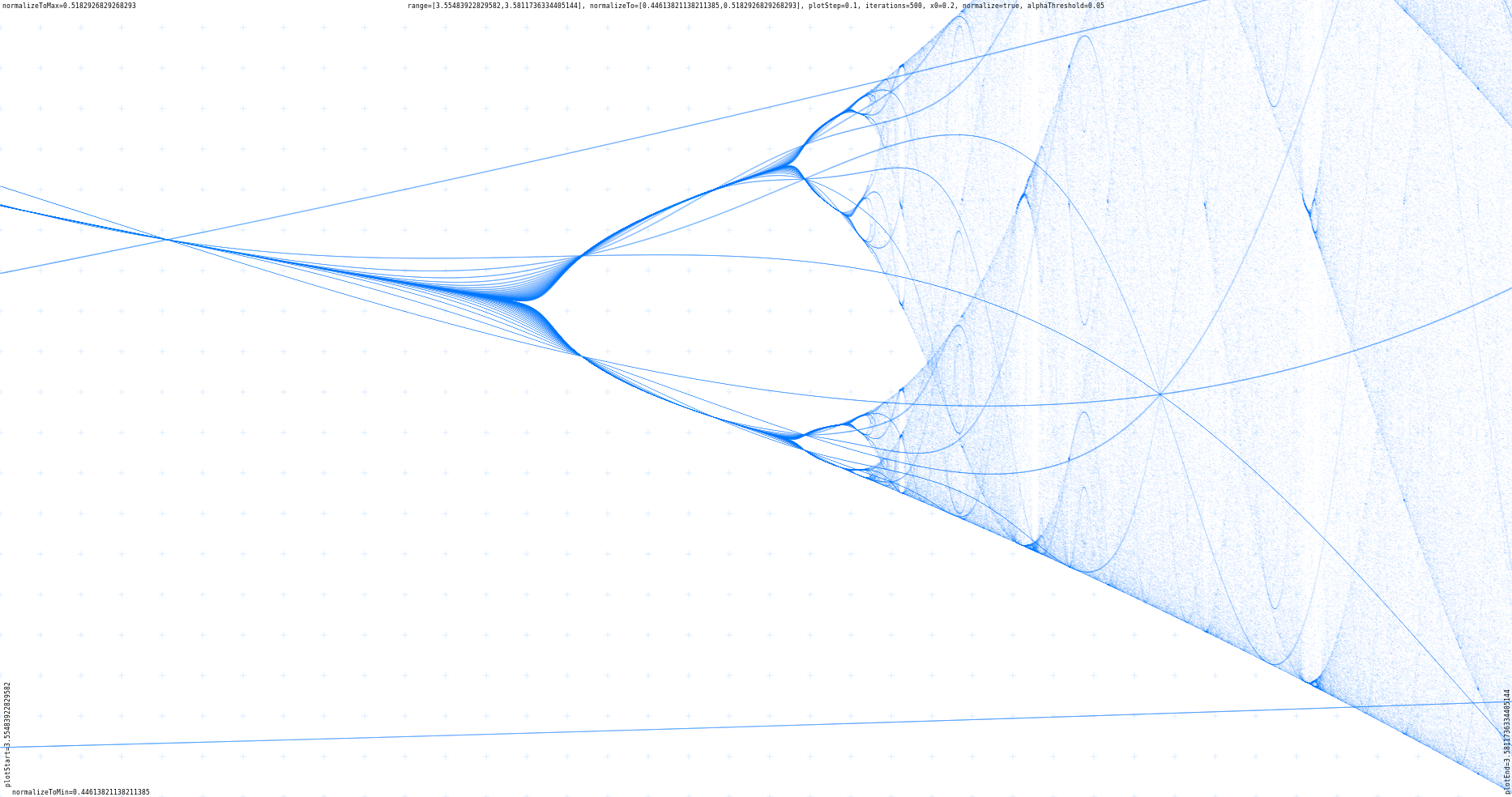
For a detailed description of this plot see my Feigenbaum-plot mini-project
And here is a tiny article about it
Perpendiducular point-to-line-distance demo
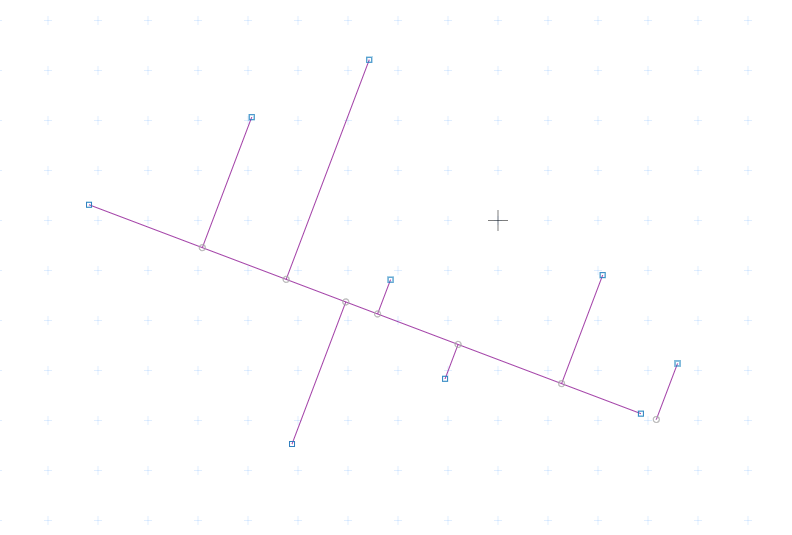
Random-scripture demo
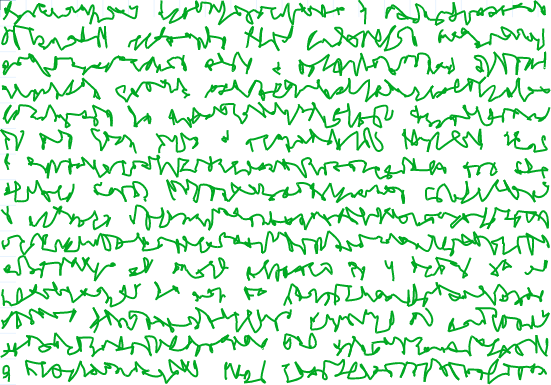
Vector field test
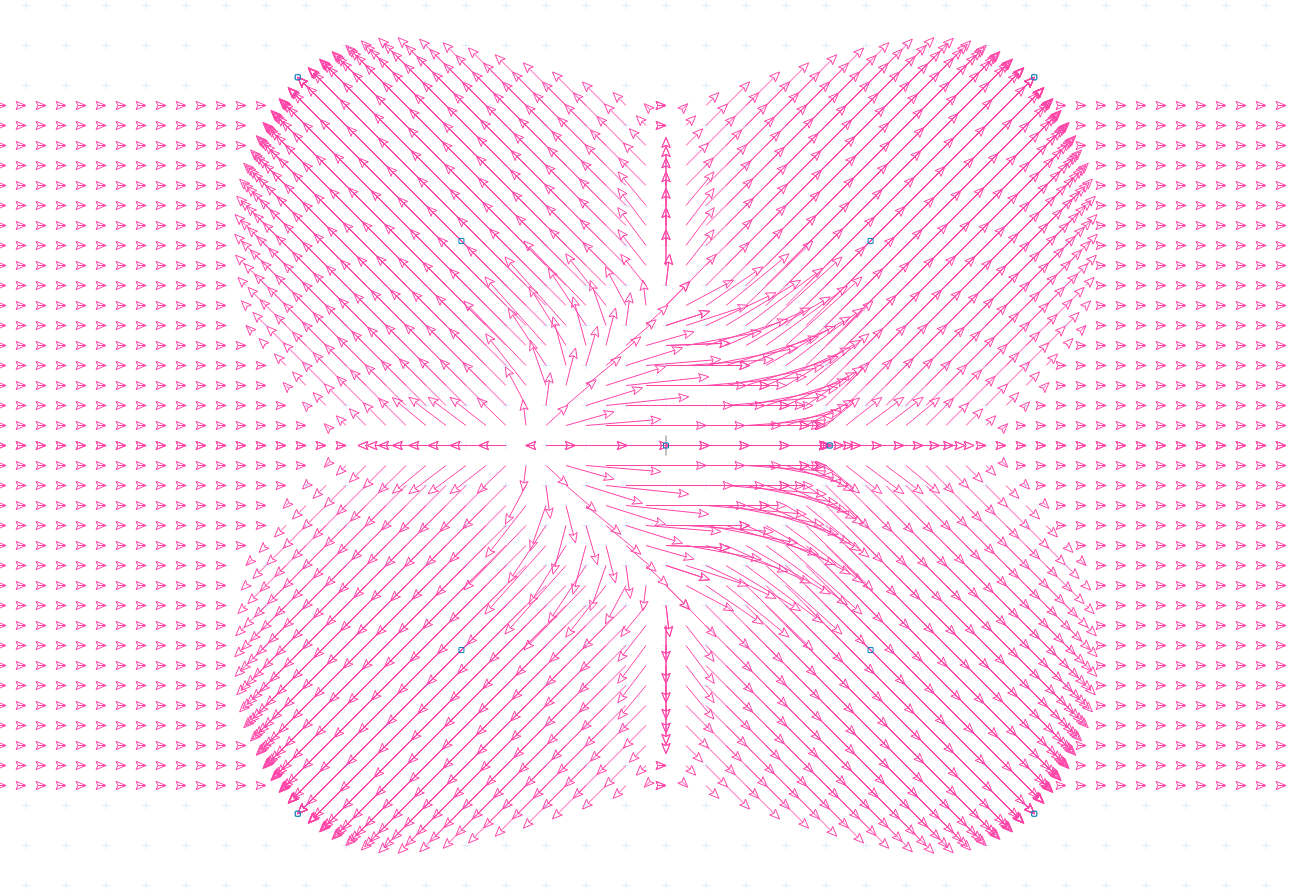
Simple circumcircles of walking triangles animation
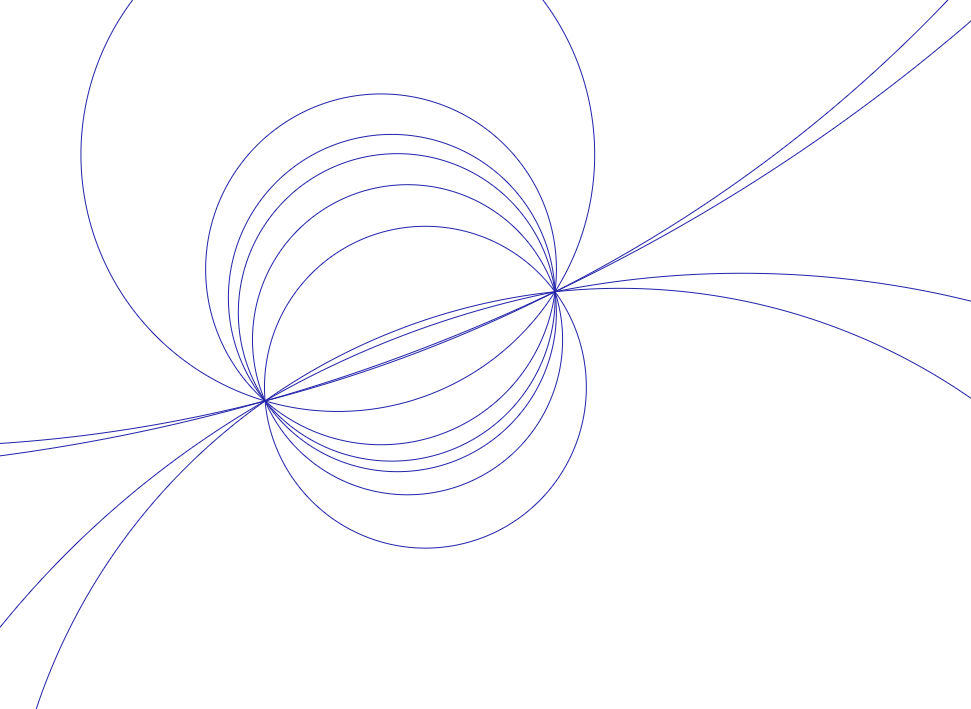
Interactive Delaunay triangulation and Voronoi diagram
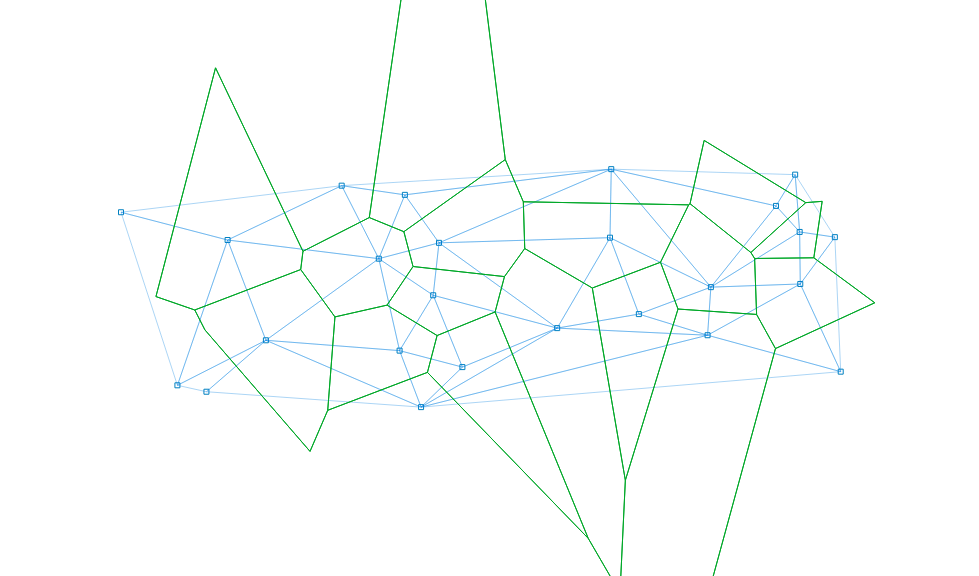
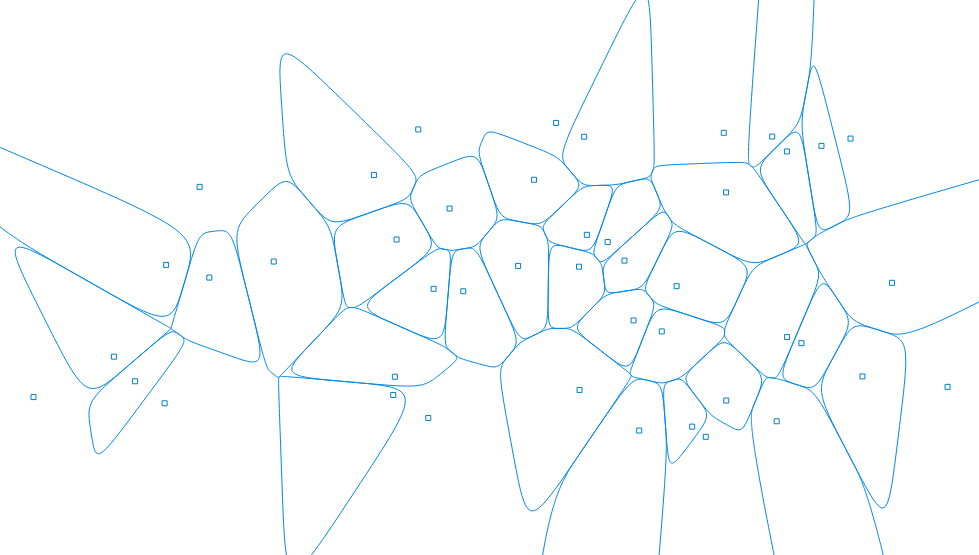
Parameters for initialization
var pb = new PlotBoilerplate(
{ // HTMLElement
// Your canvas element in the DOM (required).
canvas : document.getElementById('my-canvas'),
// boolean
// If set to true the canvas will gain full window size.
fullSize : true,
// boolean
// If set to true the canvas will gain the size of its parent
// container.
// @overrides fullSize
fitToParent : true,
// float
// The initial zoom. Default is 1.0.
scaleX : 1.0,
scaleY : 1.0,
// Specifies if the raster should be drawn.
drawGrid : true,
// If set to true the background grid will be drawn rastered.
rasterGrid : true,
// float
// The exponential limit for wrapping down the grid.
// (2.0 means: halve the grid each 2.0*n zoom step).
rasterAdjustFactor : 2.0,
// Draw a crosshair at (0,0).
drawOrigin : false,
// boolean
// When set to true then the origin of the XY plane will
// be re-adjusted automatically (see the params
// offsetAdjust{X,Y}Percent for more).
autoAdjustOffset : true,
// float
// The x- and y- fallback position for the origin after
// resizing the canvas.
offsetAdjustXPercent : 50,
offsetAdjustYPercent : 50,
// int
// The canvas size fallback if no automatic resizing
// is switched on.
defaultCanvasWidth : 1024,
defaultCanvasHeight : 768,
// float
// Two scaling factors (width and height) upon the canvas size.
// In combination with cssScale{X,Y} this can be used to obtain
// sub pixel resolutions for retina displays.
canvasWidthFactor : 1.0,
canvasHeightFactor : 1.0,
// float
// Visually resize the canvas using CSS transforms (scale).
cssScaleX : 1.0,
cssScaleY : 1.0,
// boolean
// If set to true only cssScaleX applies for both dimensions.
cssUniformScale : true,
// string
// A background color (CSS string) for the canvas.
backgroundColor : '#ffffff',
// boolean
// Switch auto-redrawing on resize on/off (some applications
// might want to prevent automatic redrawing to avoid data
// loss from the drae buffer).
redrawOnResize : true,
// boolean
// Indicates if Bézier curve handles should be drawn (used for
// editors, no required in pure visualizations).
drawBezierHandleLines : true,
// boolean
// Indicates if Bézier curve handle points should be drawn.
drawBezierHandlePoints : true,
// function
// A callback function that will be triggered just before the
// draw function clears the canvas (before anything else was drawn).
preClear : function() { console.log('before clearing the canvas on redraw.'); },
// function
// A callback function that will be triggered just before the
// draw function starts.
preDraw : function() { console.log('before clearing and before drawing.'); },
// function
// A callback function that will be triggered right after the
// drawing process finished.
postDraw : function() { console.log('after drawing.'); },
// boolean
// Indicates if the application should handle mouse events for you.
enableMouse : true,
// boolean
// Indicates if the application should handle touch events for you.
enableTouch : true,
// boolean
// Indicates if the application should handle key events for you.
enableKeys : true
} );
Events
The Vertex class has basic drag event support:
var vert = new Vertex(100,100);
vert.listeners.addDragListener( function(e) {
// e is of type Event.
// You are encouraged to use the values in the object e.params
console.log( 'vertex was dragged by: ',
'x='+e.params.dragAmount.x,
'y='+e.params.dragAmount.y );
} );
The e.params object
{
// The canvas that fired the event.
element : [HTMLElement],
// The event name.
// Default: 'drag'
name : string,
// The current drag position.
pos : { x : Number, y : Number },
// A mouse button indicator (if mouse event).
// 0=left, 1=middle, 2=right
button : Number,
// A flag indicating if event comes from left mouse button.
leftButton : boolean,
// A flag indicating if event comes from middle mouse button.
middleButton : boolean,
// A flag indicating if event comes from right mouse button.
rightButton : boolean,
// A mouse-down-position: position where the dragging
// started. This will not change during one drag process.
mouseDownPos : { x : Number, y : Number },
// The most recent draw position (position before
// current drag step).
draggedFrom : { x : Number, y : Number },
// True if this is a drag event (nothing else possible at the moment).
wasDragged : boolean,
// The x-y-amount of the current drag step.
// This is the difference between the recent drag step
// and the actual drag position.
dragAmount : { x : Number, y : Number }
}
Usage
- [SHIFT] + [Click] : Select/Deselect vertex
- [Y] + [Click]: Toggle Bézier auto-adjustment for clicked bézier path point
- [ALT or CTRL] + [Mousedown] + [Drag] : Pan the area
- [Mousewheel-up] : Zoom in
- [Mousewheel-down] : Zoom out
Re-compile the package
The package is compiled with webpack. See the webpack.config.js file.
Install webpack
This will install the npm-webpack package with the required dependencies for you from the package.json file.
$ npm install
Run webpack
This will generate the ./dist/plotboilerplate.min.js file for you from the sources code files in ./src/*.
$ npm run webpack
Todos
- Include Touchy.js as a package dependency.
- Include FileSaver.js as a package dependency.
- Add a triangle helper class (like in the animation demo)?
- Measure the canvas’ border when applying fitToParent! Currently a 1px border is expected.
- Add config item for deactivating mouse wheel zoom.
- The BezierPath uses a _scalePoint helper function. Replace this by Vertex.scale().
- Make strokes configurable (color, width, style).
- Make Bézier Curves dividable (by double click?).
- Implement snap-to-grid.
- Make ellipses rotatable.
- Write better viewport/viewbox export. Some viewers do not understand the current format. Refactor BoundingBox2 for this?
- The PlotBoilerplate.viewport() function already returns a bounding box (min:{Vertex},max:{Vertex}).
- Add arcs?
- Add image flipping.
- Add Images to the SVGBuiler.
- Move the helper function PlotBoilerplate.utils.buildArrowHead to the Vector class. It belongs there.
- Add image/svg support (adding SVG images).
Browsers support
 IE / Edge |
 Firefox |
 Chrome |
 iOS Safari |
|---|---|---|---|
| IE11 & Edge | latest | latest | latest |
Dependencies
- HTML5 Canvas
Used Libraries
Known bugs
- BezierPath counstructor (from an older implementation) fails. This needs to be refactored.
- SVG resizing does not work in Firefox (aspect ratio is always kept, even if clip box changes). Please use PNGs until this is fixed.
- Currently no more known. Please report bugs.